The dancing oobleck experiment is a crowd pleaser, not only for kids but for adults; trust me when I say I amazed even my born skeptical brother with this one years ago! Today I will share with you how to do this incredible experiment at home or in the classroom.
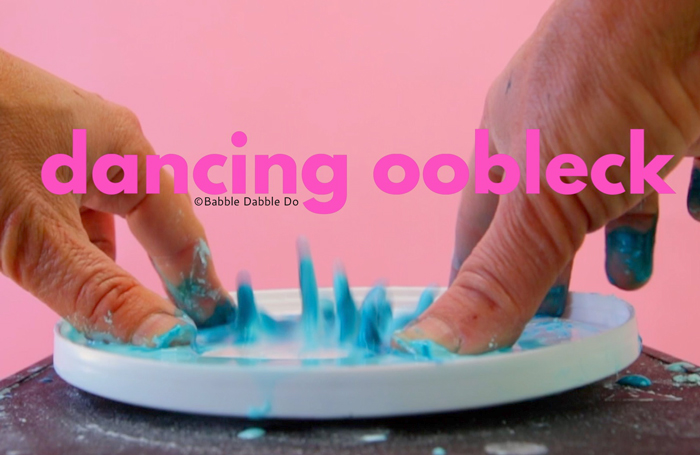
PROJECT NOTE: This project will require the use of some specialty materials including a subwoofer/speaker set and cables to connect it to a tablet or smartphone. I had a set of computer speakers and subwoofer from an old TV sound system thatI was able to use. They will get a bit dirty so make sure this is a set of speakers you don’t mind getting few drops of oobleck on.
Dancing Oobleck Materials
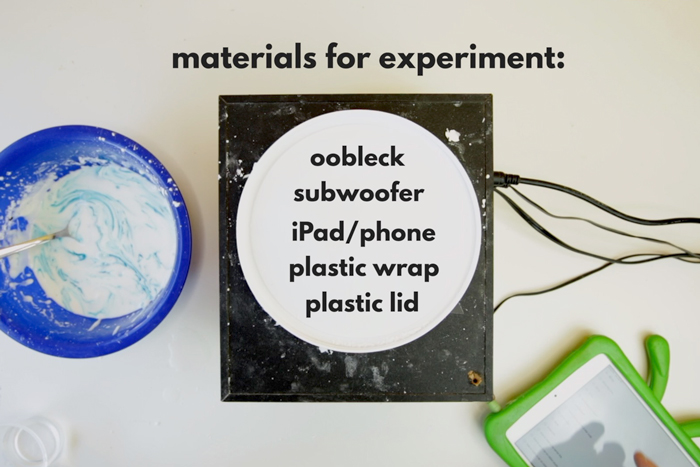
- Oobleck Get the recipe here
- Subwoofer
- Tablet/Smartphone
- Plastic Lid OR Plastic Wrap
Dancing Oobleck Experiment
Learn how to do the Dancing Oobleck experiment.
- Make Oobleck
Mix up a batch of oobleck using the recipe here.

- Set up your subwoofer
Place an old subwoofer on a flat surface. Hook it up to a tablet. You may need to hook up a set of speakers along with the subwoofer. Go here and select a low frequency test tone http://onlinetonegenerator.com. 40 Hz is a good frequency to start with. Play the tone and make sure it is audible through the subwoofer.

- Cover the subwoofer
Place a large plastic lid or plastic wrap over the subwoofer. Make sure that it is larger enough to contain the oobleck. Lids work well because they have edges that will contain the liquid.

- Add the oobleck
Place a few tablespoons of oobleck on the lid or plastic wrap.

- Make the oobleck dance
Play a low frequency test tone and hold the plastic lid tightly against the subwoofer. Alternatively use your fingers to stretch plastic wrap over the subwoofer and hold in place. The vibrations in the subwoofer will begin to make the oobleck vibrate and cause it to lift up and “move” in a weird and wonderful dance. If it doesn’t start dancing push a chunk of the oobleck with your fingertip to “activate it” and make it move.

- Test different tones
Try playing different test tones and seeing how it changes the way the oobleck “dances.” Hint: best range is 40hz-80hz
The Science Behind the Experiment
Sound vibrations travel in waves that can be detected by the ear. Sound can be transmitted through air, water, and solids. One of the units used to measure sound energy is called frequency.
Frequency is defined as the number of times per second that sound waves repeat themselves. It is the speed of vibration and is sometime referred to as pitch though pitch is a description of how high or low something sounds, whereas frequency describes the cycle rate of the sound wave itself.
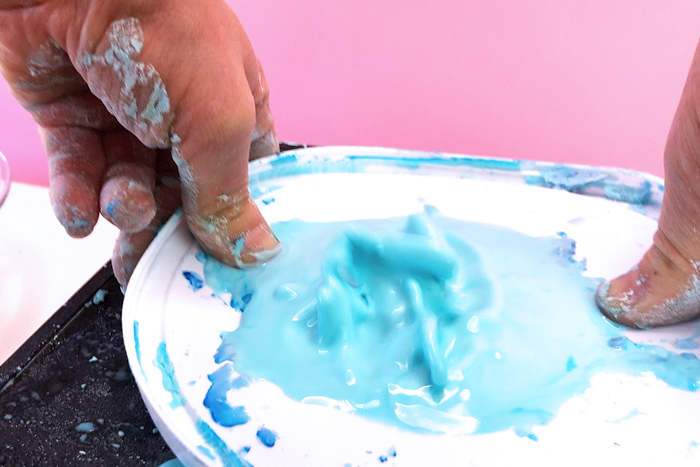
You can’t see sound BUT you can use it to move something thus making it visible. In the dancing oobleck experiment we are able to watch sound waves on the subwoofer and plastic lid. As the subwoofer produces a sound, it’s surface vibrates along with the lid on top. When you put oobleck on the lid, the vibrations move through it and you can “see” the sound waves. If your oobleck is more liquid-like you will be able to see patterns of Faraday Waves on the surface. Faraday waves are standing waves that appear on liquids that are vibrating. If your oobleck is more solid and you press it with your finger it will rise up and move in strange ways because of its unique properties.

Oobleck has two unique scientific properties. It is a non-Newtonian fluid, a term for a liquid whose viscosity changes depending on pressure, and a colloid, a mixture in which a small particles of a substance are suspended throughout another substance but not chemically bonded. These properties make oobleck move in very weird and wonderful waves when subjected to sound vibrations.
Conclusion & More
If you enjoyed this weird and wonderful project check out this video with two of our other favorite strange science projects for kids:
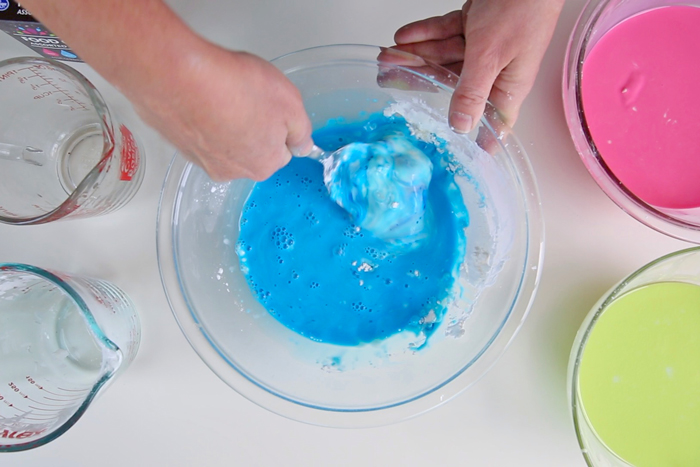
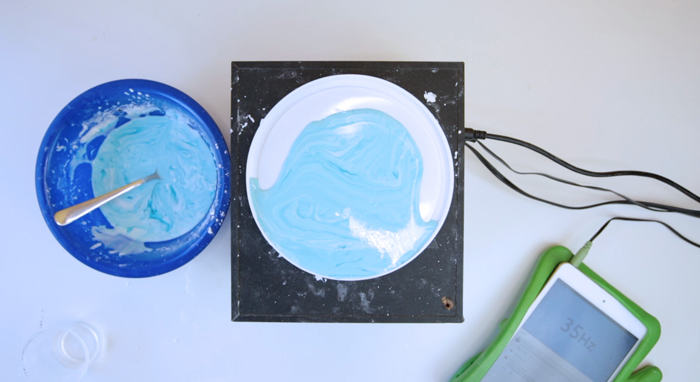
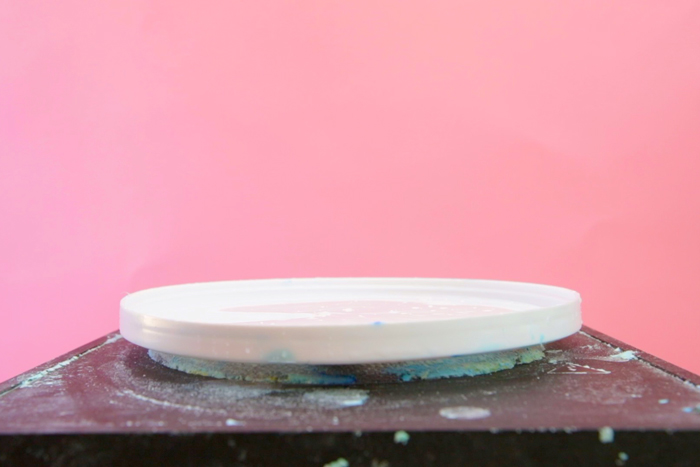
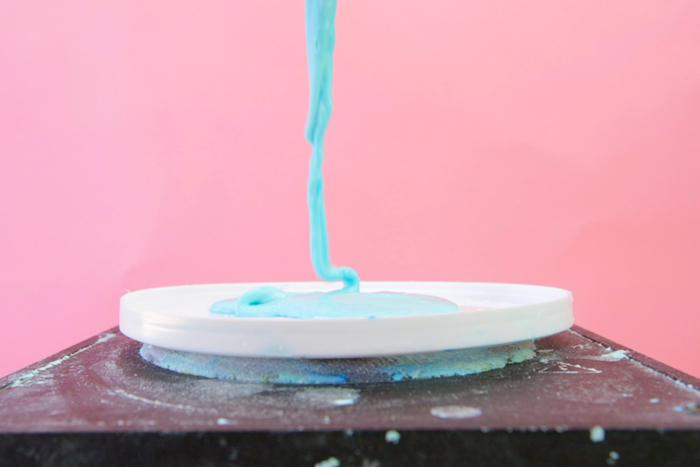
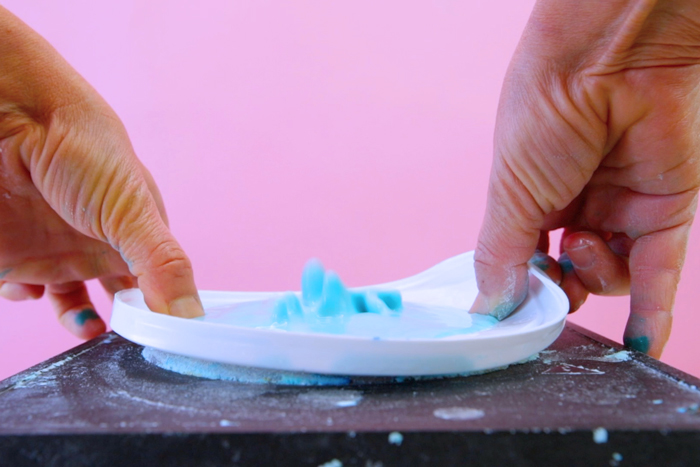
Leave a Reply